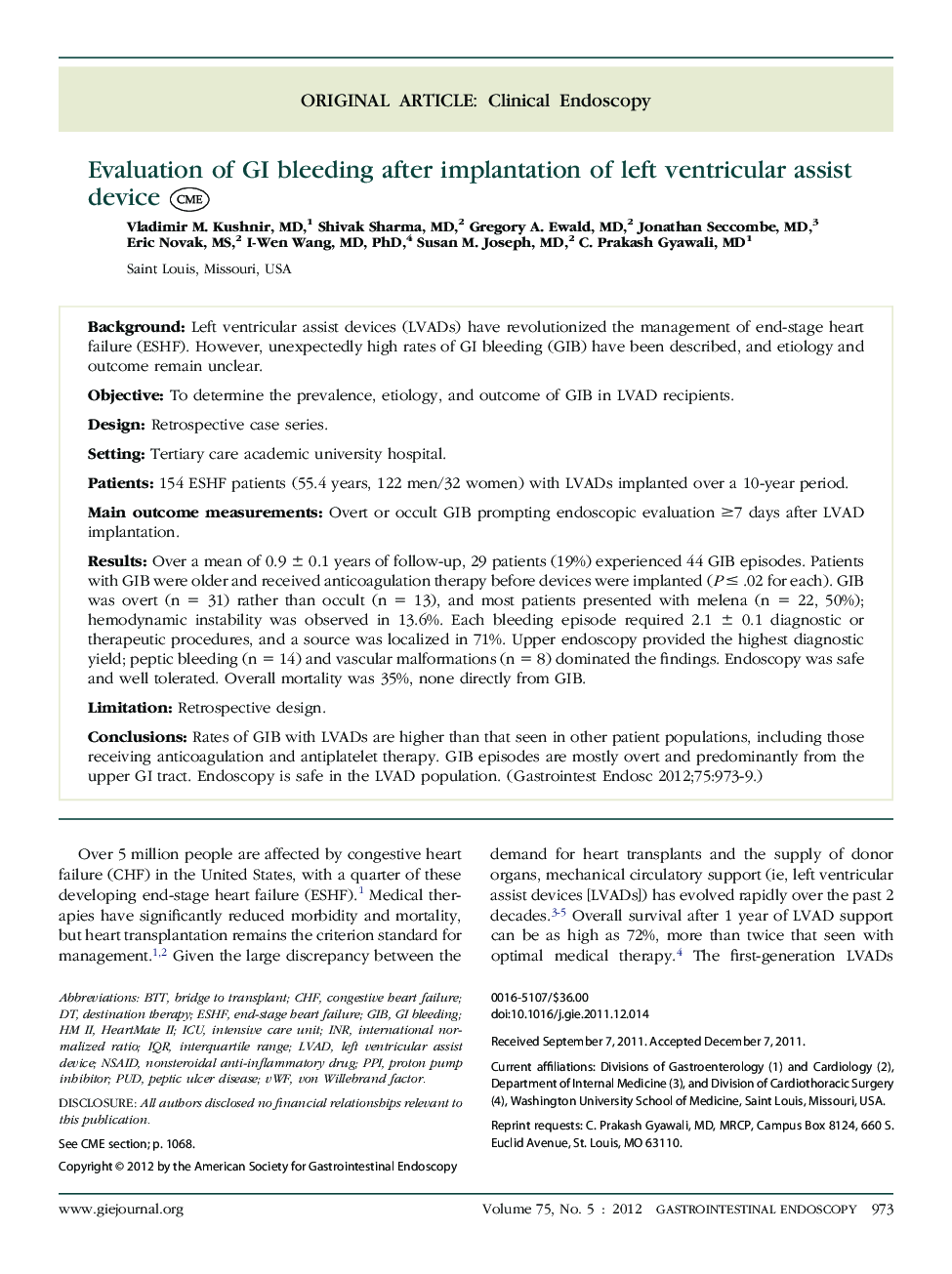| Article ID | Journal | Published Year | Pages | File Type |
|---|---|---|---|---|
| 3304941 | Gastrointestinal Endoscopy | 2012 | 7 Pages |
BackgroundLeft ventricular assist devices (LVADs) have revolutionized the management of end-stage heart failure (ESHF). However, unexpectedly high rates of GI bleeding (GIB) have been described, and etiology and outcome remain unclear.ObjectiveTo determine the prevalence, etiology, and outcome of GIB in LVAD recipients.DesignRetrospective case series.SettingTertiary care academic university hospital.Patients154 ESHF patients (55.4 years, 122 men/32 women) with LVADs implanted over a 10-year period.Main outcome measurementsOvert or occult GIB prompting endoscopic evaluation ≥7 days after LVAD implantation.ResultsOver a mean of 0.9 ± 0.1 years of follow-up, 29 patients (19%) experienced 44 GIB episodes. Patients with GIB were older and received anticoagulation therapy before devices were implanted (P ≤ .02 for each). GIB was overt (n = 31) rather than occult (n = 13), and most patients presented with melena (n = 22, 50%); hemodynamic instability was observed in 13.6%. Each bleeding episode required 2.1 ± 0.1 diagnostic or therapeutic procedures, and a source was localized in 71%. Upper endoscopy provided the highest diagnostic yield; peptic bleeding (n = 14) and vascular malformations (n = 8) dominated the findings. Endoscopy was safe and well tolerated. Overall mortality was 35%, none directly from GIB.LimitationRetrospective design.ConclusionsRates of GIB with LVADs are higher than that seen in other patient populations, including those receiving anticoagulation and antiplatelet therapy. GIB episodes are mostly overt and predominantly from the upper GI tract. Endoscopy is safe in the LVAD population.
